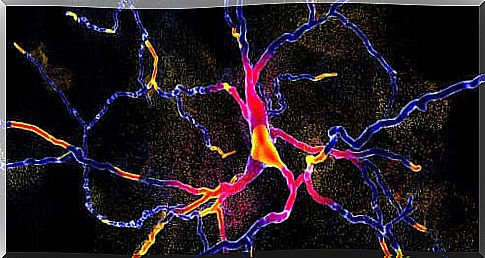Diagnosing Multisystem Atrophy With New Technique

Parkinson’s disease and multisystem atrophy are conditions that are similar in many ways. For example, their symptoms are similar and research on their origin points in the same direction.
Furthermore, both are neurodegenerative diseases that progress inexorably into more serious forms. Thus, the search for effective treatment also includes finding ways to diagnose the disorders in time to address them.
The potentially good news is that the journal Nature published some advances in this area in February of this year. Perhaps the most relevant research to date has been done at the University of Texas. Here a technique is proposed that can distinguish between Parkinson’s disease and multisystem atrophy.
Given the difficulty doctors have in diagnosing these diseases in their early stages, these advances could be relevant. An accurate and timely diagnosis would make it possible to identify appropriate treatments.
Until now, the only way to know which condition is involved is to wait and see how the symptoms develop. Clinically, multisystem atrophy progresses faster than Parkinson’s disease, so the later it is diagnosed, the worse the prognosis.
Certainly when the symptoms are clearly perceptible, the deterioration progresses faster and faster. In a biological sense, the delay translates into more neurons with irreversible damage. Let’s take a closer look at this.
What is Parkinson’s disease?

Parkinson’s disease is a progressive neurodegenerative disease. The main symptom of Parkinson’s disease is reduced range of motion. Parkinson’s patients present with marked tremors and tremors, usually in the hands and legs.
As the disease progresses, the problems spread to other parts of the body, adding stiffness to the symptoms. This leads to, among other things:
- balance problems.
- lack of coordination.
- slower completion of movements.
The chemical change that is known to be the direct cause is the lack of dopamine. Dopamine is a substance that functions as a neurotransmitter in the nervous system. The deficiency causes the symptoms of the disease.
It is more common in people over the age of 60 and therefore age is considered a risk factor. However, this disease can also develop at a younger age. The most famous case in the world is the situation of actor Michael J. Fox (English link), who was diagnosed at the age of 29.
What is Multisystem Atrophy?
Multiple or multisystem atrophy is also a neurodegenerative disorder. Like Parkinson’s disease, it most often occurs in older individuals, in this case over the age of 50.
The symptoms are very similar to Parkinson’s disease, including motor disorders. However, there is an important difference, which is the ability to influence the autonomic functions of the body as well. As a result, patients suffer from problems such as:
- abnormal breathing
- arterial hypotension
- constipation
- arrhythmias
- urinary incontinence
There is no clear cause of multisystem atrophy. Research has yet to uncover the underlying problem that would give rise to the disease. However, we do know that the brain neurons atrophy and fill with a protein called alpha-synuclein.
Alpha-synuclein and new research on multisystem atrophy

The protein that both diseases share and that could potentially open the door to differential diagnosis is called alpha-synuclein. It is also known by the acronym aSyn.
This protein folds incorrectly, causing it to accumulate and damage neurons. When the accumulation of the error exceeds the limits of normality, motor consequences occur.
In both Parkinson’s disease and multisystem atrophy, aSyn accumulates for years until it limits neural functionality. Although the protein is detectable, one cannot say with certainty at this time whether the accumulation will progress to Parkinson’s disease or multisystem atrophy.
This new research, published in Nature , proposes a biochemical method called cyclic protein folding amplification. This can differentiate the way of folding of the protein.
If further progress is made, the method will hopefully be able to distinguish between the wrong form of folding in Parkinson’s disease and multisystem atrophy.
The sensitivity of this test reported in the article is 95.4%, which is very promising. It would be a diagnostic test with a high success rate to arrive at a diagnosis in time.
In addition, it could speed up treatment plans because doctors no longer have to wait for differentiation of the complaints to determine which pathology is involved.
A hopeful development
Neurodegenerative diseases are a major problem in society. In addition, an aging population has revealed new aspects of these conditions. Science is examining daily how to diagnose and then treat them.
However, this new development could improve early diagnosis, and this could lead to advances in treatment to slow its progression. At this time, it is very important to immediately consult a professional in case of strange symptoms.









